Photographing sherds in London (January 29th -February 7th)
As I detailed in my last post, the takeaway from our last photography session was that we needed more description to make sure that everyone knows what we are doing and we all stick to the same plan. So another protocol had to be devised for this new session, working on material excavated by Museum of London Archaeology. This is not the only change, though, since last time we were photographing ‘whole pots’, whereas this time not even the archaeologists will maintain that these vessels are complete. Arch-I-Scan is moving on to photographing sherds. But we need to do so efficiently, because we need to process thousands of them. Samian pottery is typologically categorised into (give or take) sixty categories. Add to this that any given vessel can break in a myriad of ways. A quick calculation gives sixty myriad different sherds that the machine needs to be able to identify. If we want to stand a good chance, we need lots and lots of photographs of sherds. So we need a new protocol, which describes an efficient process of taking photographs of sherds of pottery…
Even after the experience of last December, it still amazes me that I should have spent over three weeks designing a process and detailing it in an eight-page document. Eight pages to detail how to take photos of broken things! And we are not even looking for perfect publication ready photos; we are looking for speed. We thought of a clever way of quickly determining from which angles to take the photos (enclose the sherd in an imaginary box as it lies on the table and take a photograph from each face of the box) and we are using an app that lets us label the photos before we take them, saving literally weeks of processing afterwards.
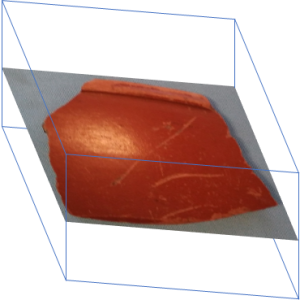
Sherd in imaginary box
My proudest moment in the whole process was my stroke of genius in realising that phones also have a selfie camera. Up to that point we were trying to be clever with the order in which we took the photos to ensure efficiency when clipping on a magnifying lens to the camera. Using the selfie camera, we could just leave it clipped on! I am not even embarrassed to say that I danced around campus and the office for the rest of the afternoon, I was that pleased with the idea. (Although it does illustrate how low I set the bar for the qualification ‘genius’…)
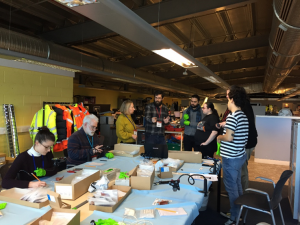
Santos Núñez Jareño explains machine learning AI to volunteers
Fast forward to London; this time we have volunteers operating the phones for us. The group of volunteers is a mix from all walks of life, from the digitally challenged (in their own words) to the tech-savvy, from students to retired. Working with new people also means explaining the project, the photography process and some details of the AI mechanisms which make the project work. And then it is photographing sherds for hours on end. Not the most glamourous activity, but then, most of archaeology is not very glamourous. Focus the camera, take the photo, rotate the sherd, focus the camera, take the photo…
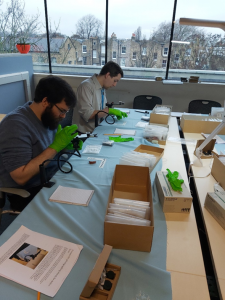
Santos and yours truly hard at work
… The atmosphere is good, though: enthusiastic volunteers, lively conversation and many, many photographs. It still is amazing, though, how many protocol decisions still need to be made or revisited. Apparently, even an adapted plan still does not survive contact with reality. I spent way more time than I expected discussing process and communicating tweaks to the protocol as and when it turns out reality does not align with the procedure we devised. It feels good, though, to see a project truly get started. Now all I can do is wait and hope it is enough to get the machine to recognise them.
Back in Leicester it turns out that there is something else I can do beyond waiting: error correction. Since all of us are human, mistakes are inevitable. When taking 500 photographs per day in a repetitive process, you are not going to be 100% sharp all the time. So sometimes you accidentally take eight pictures instead of the planned seven (this is not such a big deal; very useful, the delete button). Many photos are perfect, with some being really good:
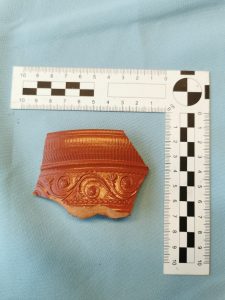
Beautiful photo of decoration on a Samian bowl
But the set also included howlers like a close-up photo of the fabric (the inside make-up) of the sherd which exclusively the exterior slip in shot…
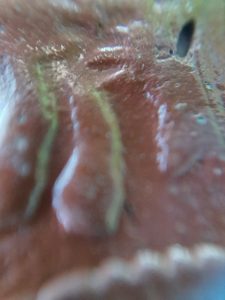
Beautiful way of making a blob fish out of decoration on Samian, not very useful for analysis of fabric
Still, with over 29000 photos taken in these two week, the vast majority of which is fine, I call that a success.


 Subscribe to Daan van Helden's posts
Subscribe to Daan van Helden's posts
Recent Comments